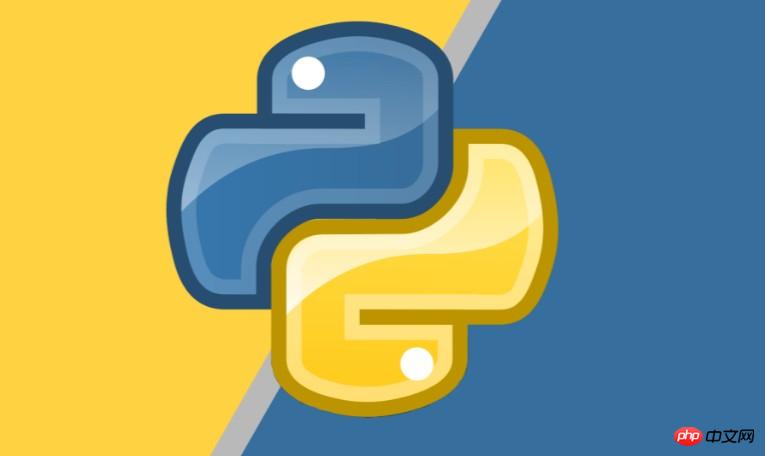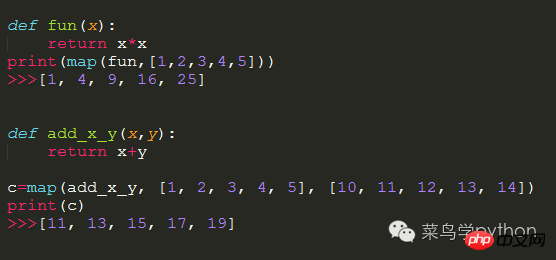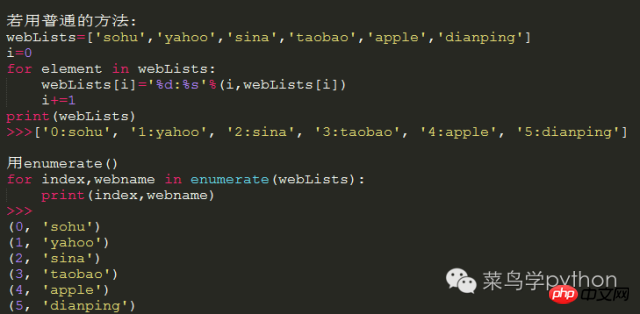Built-in functions that all Python masters know
Python has some very clever and powerful built-in functions, which are generally not used by beginners. I only discovered after using Python for a while, wow, there are such good functions. These functions are classic and After rigorous testing, it can save you a lot of things at once. The code is not only simpler and easier to read, but also you don’t have to build it behind closed doors. It not only makes it easier for you but also reduces bugs.

1.sorted()
1) Sorting a list
sorted([100, 98, 102, 1, 40]) >>>[1, 40, 98, 100, 102]
2) Through key parameters/functions
For example, there are many dictionary elements nested in a long list. We need to sort according to the length of each element
L = [{1:5,3:4},{1:3,6:3},{1:1,2:4,5:6},{1:9}]
new_line=sorted(L,key=lambda x:len(x))
print(new_line)
>>>[{1: 9}, {1: 5, 3: 4}, {1: 3, 6: 3}, {1: 1, 2: 4, 5: 6}]3) Sort the List composed of tuples
For example, the following is a list of the ages of students
students = [('wang', 'A', 15), ('li', 'B', 12), ('zhang', 'B', 10)]
print(sorted(students, key=lambda student : student[2]))
>>>[('zhang', 'B', 10), ('li', 'B', 12), ('wang', 'A', 15)]4) Use cmp function to sort
students = [('wang', 'A', 15), ('li', 'B', 12), ('zhang', 'B', 10)]
print(sorted(students, cmp=lambda x,y : cmp(x[0], y[0])) )
>>>[('li', 'B', 12), ('wang', 'A', 15), ('zhang', 'B', 10)]In fact, we need to talk about Python's sorting in detail. It requires a whole article to talk about its sorting algorithm. There is a lot of content. If you are interested, you can take a look at the source code to see how it is designed. I just click here first.
2.map()
map can map a specified sequence according to the provided function. It accepts a function f and a list, and applies the function f to each element of the list, and then returns a new list. The input parameters of the map function are also It can be multiple. Note that this function must have a return value (the value is important three times).
Otherwise, a new list will be returned, similar to [None, None, None, None, None, None, None, None, None]

The suitable scenario is that some elements in the list require repeated operations, which can be easily done with map.
3.enumerate()
In Python, iteration always takes out the element itself, not the index of the element. Sometimes we need to know the index of the element. For example, there are some website names in a long list. We hope that the index can also be listed when printing. . If there is no such function, we need to add a variable and increment the counting variable when printing in the loop. Now that we have enumerate, we don’t have to go to such trouble and we can do it directly.

4.zip()
The zip function accepts any number of sequences (including 0 and 1) as parameters and returns a tuple list
x = [1, 2, 3] y = [4, 5, 6] z = [7, 8, 9] xyz = zip(x, y, z) >>print xyz
This function is very convenient especially when building dictionary sequences (this trick is very clever, you can figure it out carefully)

5.filter()
The filter function accepts a function f and a list. The function of this function f is to judge each element and return True or False. This can filter out some elements that do not meet the conditions, and then return a list that meets the conditions.
def is_even(x): return x%2==0 print(filter(is_even,[1,2,3,4,5])) >>>[2, 4]
Especially when processing files, you need to remove some spaces, carriage returns and empty characters

6.reduce()
The usage of the reduce function is very similar to that of map. It is also a function f and a list, but the entry parameters of the function must be two. Reduce also calls each element repeatedly and finally returns the final value, while map returns a list

Note that reduce has been removed from the global function in python3. If you need to use it, you must from functools import reduce
The above is the detailed content of Built-in functions that all Python masters know. For more information, please follow other related articles on the PHP Chinese website!

Hot AI Tools

Undresser.AI Undress
AI-powered app for creating realistic nude photos

AI Clothes Remover
Online AI tool for removing clothes from photos.

Undress AI Tool
Undress images for free

Clothoff.io
AI clothes remover

Video Face Swap
Swap faces in any video effortlessly with our completely free AI face swap tool!

Hot Article

Hot Tools

Notepad++7.3.1
Easy-to-use and free code editor

SublimeText3 Chinese version
Chinese version, very easy to use

Zend Studio 13.0.1
Powerful PHP integrated development environment

Dreamweaver CS6
Visual web development tools

SublimeText3 Mac version
God-level code editing software (SublimeText3)

Hot Topics
 1386
1386
 52
52
 Can vs code run in Windows 8
Apr 15, 2025 pm 07:24 PM
Can vs code run in Windows 8
Apr 15, 2025 pm 07:24 PM
VS Code can run on Windows 8, but the experience may not be great. First make sure the system has been updated to the latest patch, then download the VS Code installation package that matches the system architecture and install it as prompted. After installation, be aware that some extensions may be incompatible with Windows 8 and need to look for alternative extensions or use newer Windows systems in a virtual machine. Install the necessary extensions to check whether they work properly. Although VS Code is feasible on Windows 8, it is recommended to upgrade to a newer Windows system for a better development experience and security.
 How to run programs in terminal vscode
Apr 15, 2025 pm 06:42 PM
How to run programs in terminal vscode
Apr 15, 2025 pm 06:42 PM
In VS Code, you can run the program in the terminal through the following steps: Prepare the code and open the integrated terminal to ensure that the code directory is consistent with the terminal working directory. Select the run command according to the programming language (such as Python's python your_file_name.py) to check whether it runs successfully and resolve errors. Use the debugger to improve debugging efficiency.
 Can visual studio code be used in python
Apr 15, 2025 pm 08:18 PM
Can visual studio code be used in python
Apr 15, 2025 pm 08:18 PM
VS Code can be used to write Python and provides many features that make it an ideal tool for developing Python applications. It allows users to: install Python extensions to get functions such as code completion, syntax highlighting, and debugging. Use the debugger to track code step by step, find and fix errors. Integrate Git for version control. Use code formatting tools to maintain code consistency. Use the Linting tool to spot potential problems ahead of time.
 Is the vscode extension malicious?
Apr 15, 2025 pm 07:57 PM
Is the vscode extension malicious?
Apr 15, 2025 pm 07:57 PM
VS Code extensions pose malicious risks, such as hiding malicious code, exploiting vulnerabilities, and masturbating as legitimate extensions. Methods to identify malicious extensions include: checking publishers, reading comments, checking code, and installing with caution. Security measures also include: security awareness, good habits, regular updates and antivirus software.
 Python: Automation, Scripting, and Task Management
Apr 16, 2025 am 12:14 AM
Python: Automation, Scripting, and Task Management
Apr 16, 2025 am 12:14 AM
Python excels in automation, scripting, and task management. 1) Automation: File backup is realized through standard libraries such as os and shutil. 2) Script writing: Use the psutil library to monitor system resources. 3) Task management: Use the schedule library to schedule tasks. Python's ease of use and rich library support makes it the preferred tool in these areas.
 What is vscode What is vscode for?
Apr 15, 2025 pm 06:45 PM
What is vscode What is vscode for?
Apr 15, 2025 pm 06:45 PM
VS Code is the full name Visual Studio Code, which is a free and open source cross-platform code editor and development environment developed by Microsoft. It supports a wide range of programming languages and provides syntax highlighting, code automatic completion, code snippets and smart prompts to improve development efficiency. Through a rich extension ecosystem, users can add extensions to specific needs and languages, such as debuggers, code formatting tools, and Git integrations. VS Code also includes an intuitive debugger that helps quickly find and resolve bugs in your code.
 Golang vs. Python: Concurrency and Multithreading
Apr 17, 2025 am 12:20 AM
Golang vs. Python: Concurrency and Multithreading
Apr 17, 2025 am 12:20 AM
Golang is more suitable for high concurrency tasks, while Python has more advantages in flexibility. 1.Golang efficiently handles concurrency through goroutine and channel. 2. Python relies on threading and asyncio, which is affected by GIL, but provides multiple concurrency methods. The choice should be based on specific needs.
 Python vs. JavaScript: The Learning Curve and Ease of Use
Apr 16, 2025 am 12:12 AM
Python vs. JavaScript: The Learning Curve and Ease of Use
Apr 16, 2025 am 12:12 AM
Python is more suitable for beginners, with a smooth learning curve and concise syntax; JavaScript is suitable for front-end development, with a steep learning curve and flexible syntax. 1. Python syntax is intuitive and suitable for data science and back-end development. 2. JavaScript is flexible and widely used in front-end and server-side programming.




